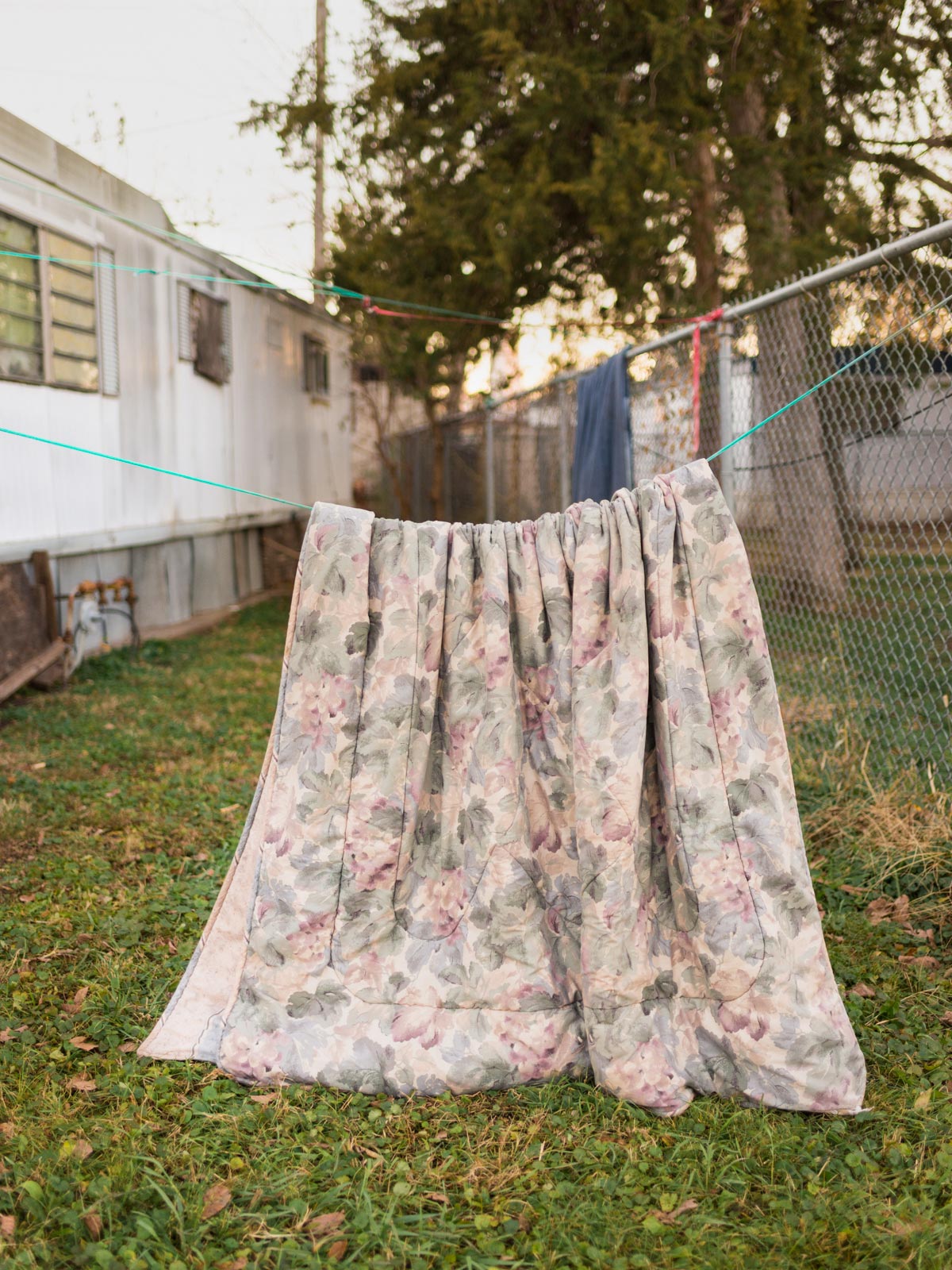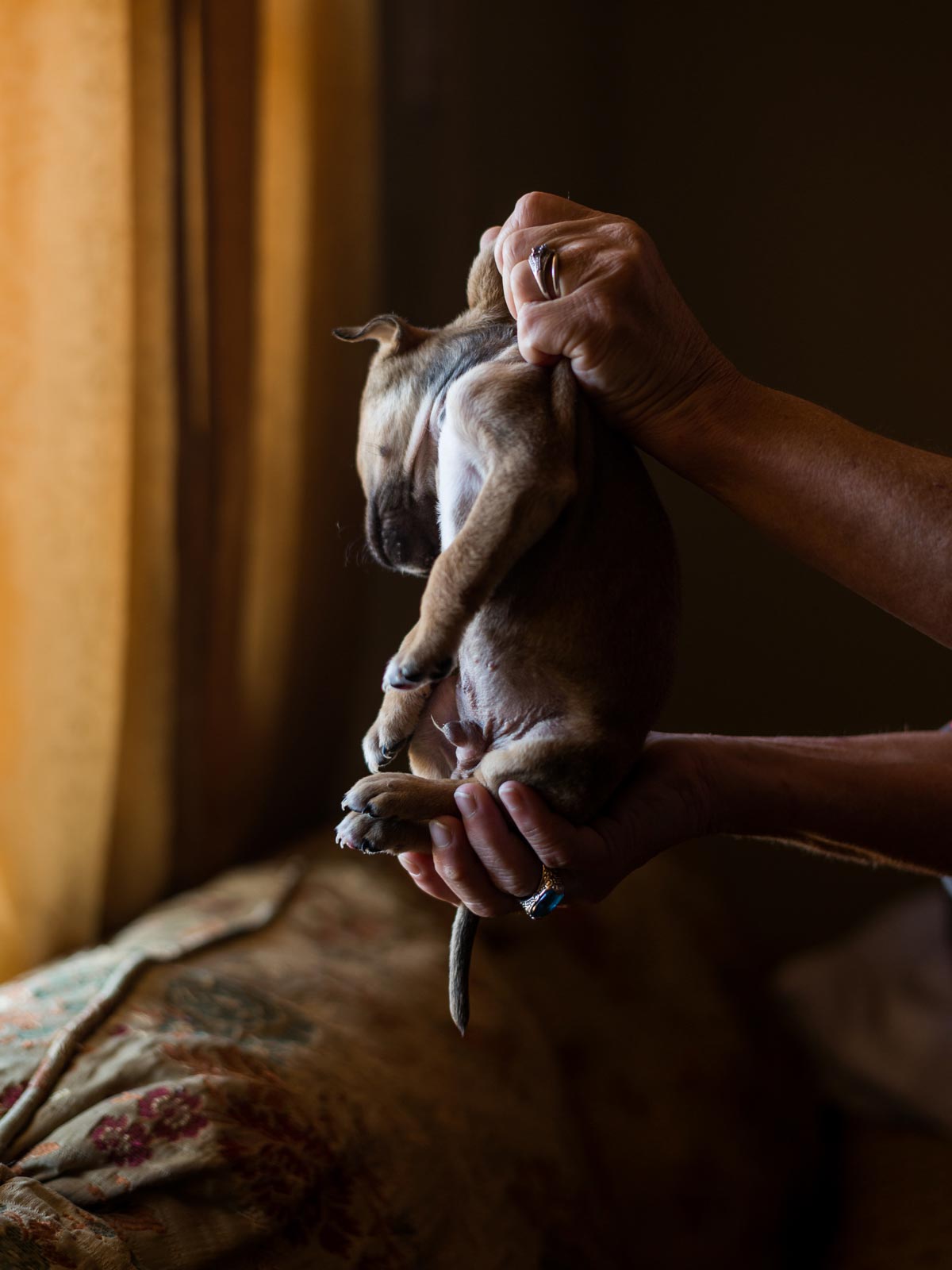John-David Richardson’s Poignant Images Are Inspired by His Troubled Upbringing












Someday I’ll Find the Sun by 28 year-old American photographer John-David Richardson is, as John-David puts it, “a poetic reflection of my personal experiences growing up in the cycle of poverty. As a child, I was surrounded by violence, alcohol abuse, drug manufacturing and neglect at the hands of my mother and her numerous abusive male partners. In an attempt to better understand the atmosphere that shaped me, I seek intimate connections with people that mirror members of my family.”
Indeed, the subjects in John-David’s photos are not his relatives but people he used as stand-ins. “When I started this project, I was creating vignettes from memories of my childhood. I visited mobile home communities in Lincoln, and the residents were gracious enough to allow me to use their homes to stage my photographs. After spending time with them, observing, photographing, and having conversations, they began to remind me of my family. I started making their portraits, and I’ve continued to work with them over the past three years.”
Working on Someday I’ll Find the Sun, a long-term series that is still in progress, helped John-David realize a few things about his family history: “I think more than anything, making this work has allowed me to understand the broader constructs set in place to trap people in the cycle of poverty. I blamed a lot of what happened to me on my mother and the choices she made during that time when I was younger; but honestly, that’s only one factor in the equation.”
John-David considers the portraits of Someday I’ll Find the Sun to be “the cornerstone of the work, while intimate interior scenes, non-descriptive portraits, and details of the surrounding landscape contextualize the portraits. These images function poetically, relying on symbolism and metaphor to reinforce ideas of neglect, violence, tension, and the expectations of family. This project has helped me understand my process as an artist and photographer. I’ve been told that I have an extroverted and disarming personality, which helps when meeting my subjects for the first time, photographing, and forming relationships with them. I try to spend as much time as possible with the people I photograph: if I show up every day, both physically and mentally, I’ve found that they do as well.”
Besides the events in his personal life, for Someday I’ll Find the Sun John-David looked for inspiration in literature, specifically “authors writing about poverty. Appalachian writer David Joy’s novels Where All Light Tends to Go and The Weight of This World have both been particularly influential to me while making this work, along with Joy, S.E. Hinton’s The Outsiders, Rebecca Gayle Howell’s American Purgatory, Nic Pizzolatto’s Galveston, Matthew Desmond’s Evicted: Poverty and Profit in the American City, and Nancy Isenberg’s White Trash: The 400-Year Untold History of Class in America.”
The title, Someday I’ll Find the Sun, is inspired by a passage from S.E. Hinton’s The Outsiders: “There’s a moment early in the novel where Cherry is having a conversation with Ponyboy Curtis at the drive-in. Even though they recognize their commonalities, Cherry explains that she will not be able to acknowledge their friendship at school because of their class differences. Ponyboy responds with a beautiful line that’s stuck with me since I was a kid: “Just don’t forget that some of us watch the sunset too.”
Ideally, John-David hopes that “my work can contribute to the conversation about the class divide that consumes the United States. The people most affected by social stratification are so commonly portrayed as the “other,” and I hope that people see my work with a degree of sensitivity often lacking from other depictions of poverty. Through my images, I want the viewer to understand the emotional and psychological weight of living in poverty on an honest and human level.”
“In a braoder sense, I want to create art that encourages the viewer to understand the human condition,” John-David says about his main interests as a photographer. “I was initially interested in photography specifically because of a photograph’s ability to both trigger and preserve a memory.” The main influence on his photography was Barbara Houghton, “my wonderful mentor and professor in undergrad, who really pushed me technically, conceptually, and academically. In all honesty, she changed my life. I’ve just recently graduated with my MFA, and the faculty at the University of Nebraska, Dana Fritz and Walker Pickering, have truly been incredible over the past three years. As a southerner, Sally Mann, Gordon Parks, and William Eggleston continue to be at the forefront of my visual archive. Large portions of the images from this project were shot in Lincoln, Nebraska, but a consistent comment that I get is that the work “looks southern.” I’m not sure what that means, but I believe that it all goes back to being influenced by a place and culture that feels familiar.”
Some of John-David’s favorite contemporary photographers are Paul D’Amato, Birthe Piontek, Katy Grannan, LaToya Ruby Frazier, Matt Eich, Doug DuBois, Susan Worsham, Brandon Thibodeaux, Morgan Ashcom, Nydia Blas and Amy Elkins. The last photobook he bought was Lost: Omaha by Zora J Murff.
John-David’s #threewordsforphotography are:
Empathic. Intimate. Personal.
Keep looking...

Stonetown Diary — Jenny Hueston’s Lyrical Images Capture Life in Her Small Hometown

42 Wayne — Jillian Freyer Has Her Mother and Sisters Perform for the Camera

Catherine Hyland Captures the Touristification of China’s Barren Natural Landscapes

Ten Female Photographers You Should Know — 2020 Edition

FotoFirst — In Love and Anguish, Kristina Borinskaya Looks for the True Meaning of Love

Vincent Desailly’s Photobook The Trap Shows the Communities in Atlanta Where Trap Music Was Born

FotoCal — Photography Awards, Grants and Open Calls Closing in March 2020
